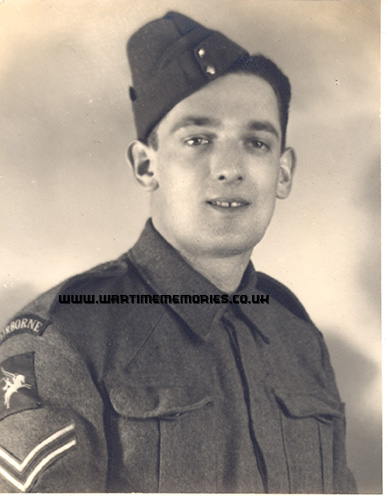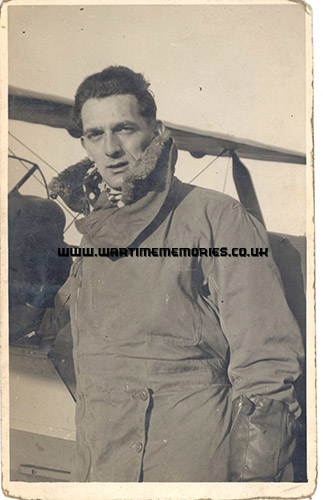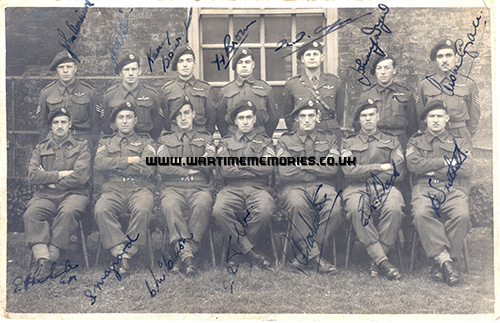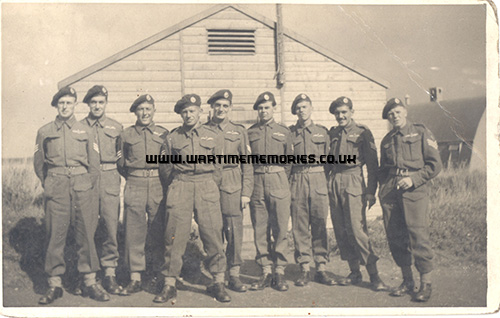|
|
|
Those known to have fought in Operation Aerial during the Second World War 1939-1945. - Ayears Horace Ernest. Cpl. (d.17th Jun 1940)
- Brown Maurice Weston. Pte.
- O'Hara DSO.. Leo Noel. Maj.
- Warburton Roland Neville Giddens. S/Sgt.
The names on this list have been submitted by relatives, friends, neighbours and others who wish to remember them, if you have any names to add or any recollections or photos of those listed,
please
Add a Name to this List
|
|
|
The Wartime Memories Project is the original WW1 and WW2 commemoration website.
Announcements
- The Wartime Memories Project has been running for 24 years. If you would like to support us, a donation, no matter how small, would be much appreciated, annually we need to raise enough funds to pay for our web hosting and admin or this site will vanish from the web.
- 27th April 2024 - Please note we currently have a huge backlog of submitted material, our volunteers are working through this as quickly as possible and all names, stories and photos will be added to the site. If you have already submitted a story to the site and your UID reference number is higher than 264001 your information is still in the queue, please do not resubmit, we are working through them as quickly as possible.
- Looking for help with Family History Research?
Please read our Family History FAQ's
- The free to access section of The Wartime Memories Project website is run by volunteers and funded by donations from our visitors. If the information here has been helpful or you have enjoyed reaching the stories please conside making a donation, no matter how small, would be much appreciated, annually we need to raise enough funds to pay for our web hosting or this site will vanish from the web.
If you enjoy this site
please consider making a donation.
Want to find out more about your relative's service? Want to know what life was like during the War? Our
Library contains an ever growing number diary entries, personal letters and other documents, most transcribed into plain text. |
|
We are now on Facebook. Like this page to receive our updates.
If you have a general question please post it on our Facebook page.
Wanted: Digital copies of Group photographs, Scrapbooks, Autograph books, photo albums, newspaper clippings, letters, postcards and ephemera relating to WW2. We would like to obtain digital copies of any documents or photographs relating to WW2 you may have at home. If you have any unwanted
photographs, documents or items from the First or Second World War, please do not destroy them.
The Wartime Memories Project will give them a good home and ensure that they are used for educational purposes. Please get in touch for the postal address, do not sent them to our PO Box as packages are not accepted.
World War 1 One ww1 wwII second 1939 1945 battalion
Did you know? We also have a section on The Great War. and a
Timecapsule to preserve stories from other conflicts for future generations.
|
|
Want to know more about Operation Aerial? There are:13 items tagged Operation Aerial available in our Library There are:13 items tagged Operation Aerial available in our Library 
These include information on officers, regimental histories, letters, diary entries, personal accounts and information about actions during the Second World War. |
|
S/Sgt. Roland Neville Giddens Warburton Glider Pilot Regiment      Roland Warburton joined up, somewhat reluctantly on 16th of October 1939. He had been working towards Civil Service Examinations and applied for exemption from call-up due to studies, but when all Civil Service exams were cancelled until further notice, he had to accept the call-up papers.
He was initially sent to 216th Searchlight Training Regiment R.E. On completion of the training he was posted to as a Gunner to 37th AA Battalion R.E. on 15th of January 1940.
In March of that year, he was granted leave and returned home to marry, a marriage that lasted 60 years, until his wife's death in the autumn of 2000. At that same time his Regiment came under the Royal Artillery, becoming 37th Tyne Electrical Engineers S/L Regiment, a Territorial Army unit.
As part of 307th Battery of that regiment, he embarked for France 18th of May 1940 landing at and deploying to protect the port of Le Havre. They were soon cut off from the remnants of the British Expeditionary Force that were being evacuated from Dunkirk and had to make their way westwards, eventually taking a ship from St Malo, arriving back in England 19th of June 1940.
After a period of leave he was sent to a training Battery attached to 37th S/L Regiment R.A. 28th July and promoted to Bombardier the next day. He was designated as Acting War Substantive Bombardier on 1st October, the promotion being confirmed at the turn of the year. On the 15th October he transferred to 519 Battery, 222nd S/L Training Regiment R.A. in the Taunton area where he remained until 5th of March 1942 when he volunteered to serve in the recently formed Glider Pilot Regiment.
Initial training was at Tilshead, on Salisbury Plain, before moving to 16 Elementary Flying Training School at Burnaston, Derbyshire at the beginning of May, where he learned to fly on Miles Magister aircraft. He completed his first solo flight a month later and passed out from 16 E.F.T.S. by the middle of July and was promoted to Sergeant, in line with G.P.R. requirements.
From there he went to No.1 Glider Training School at Thame, Oxfordshire, to fly the Hotspur glider. He graduated to the Operational Training Unit at the end of August and then to the Heavy Glider Conversion Unit at Brize Norton in mid-October to fly the much larger Horsa glider. December had him move to the Glider Pilot Exercise Unit before being posted to the 2nd Battalion of the Glider Pilot Regiment 3rd of March 1943.
A month later they embarked at Greenock for North Africa, landing at Oran, Algeria, 23rd of April 1943. During the sea voyage, they were re-designated as 2 Squadron G.P.R. as part of the 1st Airborne Division. There was a complete lack of gliders, but U.S.A. supplied a number of crated Waco CG.4 gliders, which some of the squadron helped to assemble.
After a few training flights, they were towed eastwards on a four-and-a-half-hour flight over the Atlas Mountains to their forward base in Tunisia at the end of June.
From here, on the night of 9th July, Operation Ladroke was launched to invade Sicily. His Waco carried half a platoon of the South Staffordshire Regiment who were tasked with neutralising several Italian gun positions and then capturing Ponte Grande on the approach to Syracuse.
He was fortunate in having a committed American pilot in the C-47 Skytrain aircraft that towed him to the designated release point, despite strong winds across the Mediterranean and some flak from the shore. He therefore landed about a mile short of the planned Landing Zone and his troops were able to carry out some of their tasks. Compared to the overall statistics of this operation, it was a notable achievement. Within a few days, the Glider Pilots were all evacuated by sea back to Tunisia and then moved on to Libya.
Two months after his first operation, he was back in action again during Operation Slapstick, a seaborne landing at Taranto on the Italian mainland on 9th September.
This time, he had to take the role of an infantry soldier as per the G.P.R. total soldier concept. The landing was unopposed, so there was no real fighting.
He told a story of a motorcycle accident at which he was presumed dead and was laid out in the morgue. Much to the medical orderly's surprise, he revived in the cool and sat up!
Probably as a result of this he was suspended from flying for medical reasons. He was returned to the rank of W/Cpl, although was permitted to continue wearing the Army Flying Badge.
At his own request, he transferred back to a Royal Artillery Searchlight unit, initially joining 422nd S/L Battery as from 3rd of September 1943 and participated in the gradual northwards advance of the 8th Army through Italy.
Maybe the motor cycle accident actually occurred in March 1944, as he was posted to the X(4) List on 3rd March and there is a gap in his service records for 5 months, but he remained in Italy until he was taken on strength of 323rd Independent Searchlight Battery on 7th of August 1944.
A whole year later, after the end of the War, the next entry on his service record shows him attending a 3-week course at an Army School in Perugia on 19th of August 1945, after which he was appointed as an Education Sergeant with the Central Mediterranean Force.
He talked about working with street children in Naples and also being sent to Klagenfurt in Austria to help with the processing and release of German & Italian POWs, but his service record shows no evidence of this.
He was finally sent home across Europe by train in January 1946 where he was reunited with his wife and demobilised, having earned the Defence Medal, the Africa Star and the Italy Star.
He went on to train as a teacher at Padgate College, near Warrington and spent the rest of his life teaching or as a Tutor Youth Officer. They had two children, but sadly the first was stillborn in 1946. They moved to Hertfordshire in 1955 where he lived until his death just before Christmas 2001.
He made a hobby of photography and was well respected in amateur photographic circles.
|
Maj. Leo Noel O'Hara DSO. Royal Army Medical Corps Leo O'Hara was our dad. A doctor, he was a general practitioner in Chelsea and did urology and anaesthetics at the Royal Hospital, Chelsea.
He worked on both HMS Dorsetshire and HMHS Somersetshire at different times. His diary says he was on one of these ships (we're not sure which) at the evacuation from St. Nazaire in June 1940. On the quayside, he discovered a railway wagon containing a substantial amount of France's gold, it was being loaded as a whole into the front hold. He was under orders to remain in France, a fairly harebrained idea and jumped onto the ship as it was going down the lock on its way out of St. Nazaire. He was court-martialed and demoted to captain for a while as a result. As they had gone out to sea, they had to steer around the Lancastria, which had been sunk the day before with a major loss of life.
|
Pte. Maurice Weston Brown 903 Company Royal Army Service Corps My father Maurice Brown served in WW2 with 903rd Company, RASC having joined the Royal West Kents early in 1940.
He was sent out to France in May 1940 as they went to reinforce the attempt to stop German forces invading France through Belgium.
He narrowly evaded capture around Rouen and was then evacuated near Cherbourg having abandoned all their equipment.
After re-equipping back in the UK, mostly around Dorking and Salisbury, they were sent out via Cape Town and Cairo to reinforce 1st Armoured Division. in the Western Desert in November 1941.
They arrived in time to be involved with Operation Crusader. When Rommel counter-attacked in May 1942 my father's company withdrew to Tobruk where he was captured on 20th of June 1942.
After a time in camps behind the lines he was sent to Italy, eventually to CC53 near Macerata above Ancona. Here they were not required to work, but when Italy surrendered they had about 48 hours to escape, but were advised not to attempt this by the Army.
German paratroops then took over the camp and my father was then transported by train over the Brenner Pass into Eastern Germany, firstly to a holding camp and then to a working-party on the Deutsche Reichsbahn based at Klostermansfeld, South of Leipzig near the Harz mountains.
Here between October 1943 and April 1945 he was forced to work maintaining lines, initially light work but later repairing bomb damage as far away as Leipzig. He experienced frequent near-misses from air-raids and saw much suffering.
He was eventually liberated by Patton's forces pushing eastwards over the delineated post-war frontier and flown back via Brussels.
My father maintained a diary through nearly all of his time in the Army, at great risk to himself whilst a POW. This diary although edited later for personal reasons, contains numerous references to events in 903 Coy. and the personnel with whom he served.
He tried to have it published later but not being an officer, and containing mostly routine details about food parcels etc. in camp, they told him it was not eventful enough.
Sadly on his death in September 1991 most of his possessions were disposed of, and I only have one of the draft copies he circulated.
|
Cpl. Horace Ernest Ayears 579 Field Coy. Royal Engineers (d.17th Jun 1940) My father, Cpl H E Ayears of Kent Fortress Royal Engineers TA, died
on the Lancastria. He should have returned on the Duchess Of York but he volunteered to return to Honfleur with Captain T Goodwin (who survived) and party to destroy oil storage depot there. When they returned to the docks the Duchess Of York had sailed, so they boarded Lancastria. I have been told he was asleep in No 1 hold at time of bomb. I have obtained a lot of information from C.C. Brazier's book "XD Operations". It also contains a Roll Of Honour from his party from Kent Fortress Royal Engineers who died with him.
- Sapper H.W.Blackman.
- Lance Cpl.E.G.Brown.
- Sapper.S.J.Owen.
- Lance Cpl.E.E.Plummer
- Sapper.S.J.Ruck.
- Lance Cpl.Shute.
Incidentally my mothers wedding ring fell off at 4 pm on the 17th of June 1940 into a bowl of water.
|
Recomended Reading.Available at discounted prices.
|
|
|










